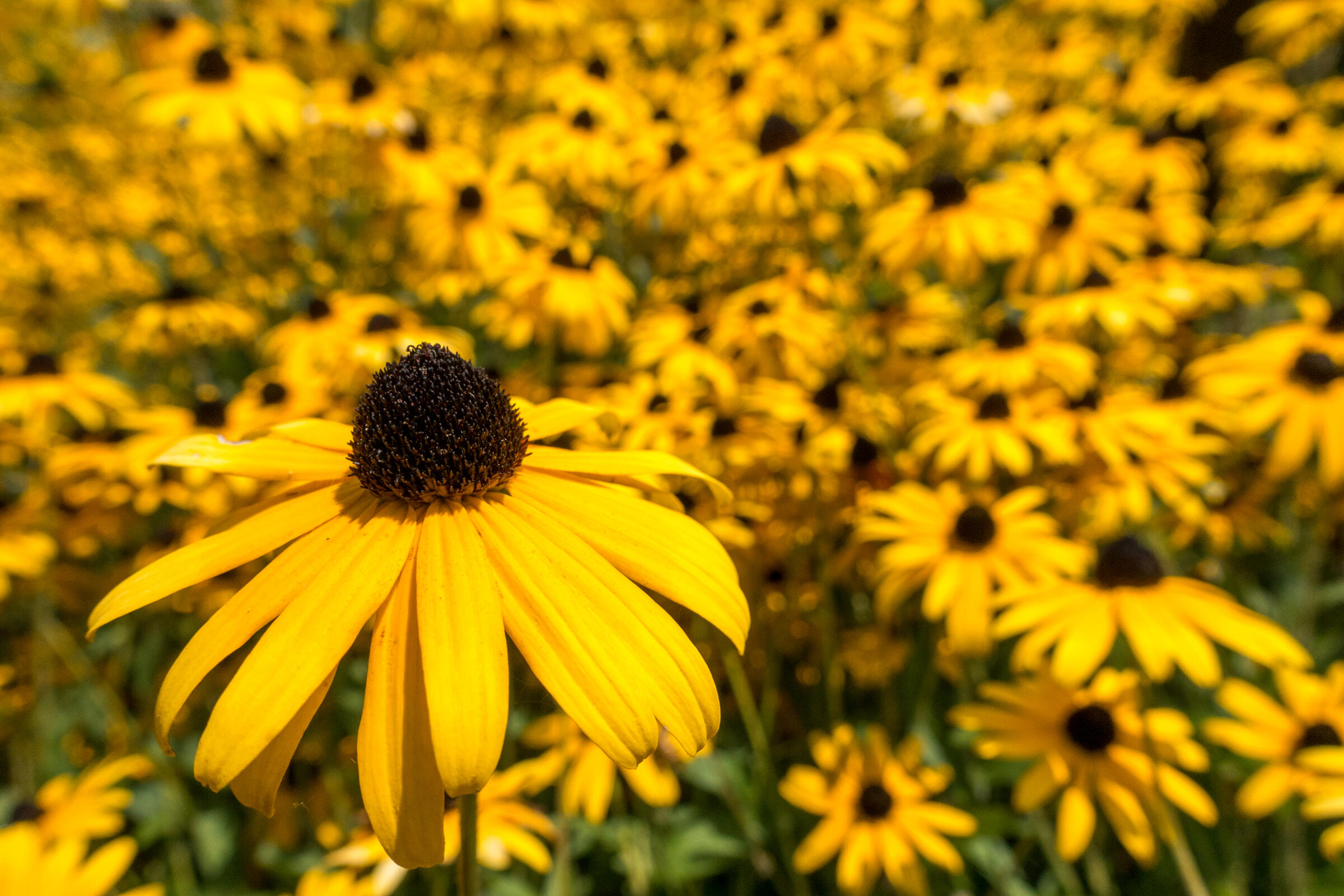1. Leave the leaves
Our first tip is to do less! Leaving leaves on the ground creates a natural mulch with several benefits:
- Creating shelter for birds and beneficial insects
- Fertilizing the soil as it decomposes and providing food for the soil’s micro-organisms
- Protecting plant roots from the cold
- Keeping moisture from evaporating
- Preventing runoff in areas with compacted soil
Gather leaves from driveways and sidewalks for free mulch and compost. Spread a thick layer at least 2 inches deep over each garden bed. Leaves can inhibit grass growth, but you can gather more mulch by raking from the center of your yard outward and onto border gardens, around trees and shrubs, or making tidy piles in protected places that can be used as winter shelter. Another option is to let your mower do the work of chopping and empty it over your garden.
2. Save the seeds
Native plants like coneflowers and black-eyed susans are a great food source for winter birds. Leave seedheads on their stems or gather pruned stems and leaves into piles in one area that can be used for shelter and/or spring nesting. Native grasses add visual interest over the winter and can be trimmed back when blooms begin in the spring.
3. Pile up some brush
As you pick up fallen branches or trim trees and shrubs, find a place that is protected from the wind and build a little brush pile. Birds can find shelter and feed on the insects as the brush breaks down. This is sometimes called a ‘passive compost’ pile and can be used as mulch in the spring.
4. Plant natives
Native wildflower seeds that naturally drop in the fall have a harder shell that prevents them from germinating too early. Native forbs that should be seeded in the fall or require cold stratification for spring planting include:
- Anise hyssop (agastache)
- Black-eyed susan (rudbeckia)
- Blazing star (liatris species)
- Cardinal flower (lobelia cardinalis)
- Coneflower (echinacea, some varieties)
- Milkweed (asclepias)
- Golden alexander (zizia aurea)
- Spotted Joe Pye weed (eutrochium maculatum)
- Wild blue phlox (phlox divaricata)
- Wild geranium (geranium maculatum)
These seeds can be scattered after the first frost of the season, but before the ground freezes; scatter generously, then gently step on the seeds to keep them in place. Seeds planted in the fall can germinate and bloom up to two weeks earlier than those planted in the spring.
Click here for a list of Nebraska natives or here to search Audubon's Plants for Birds database to attract specific birds to your yard!






